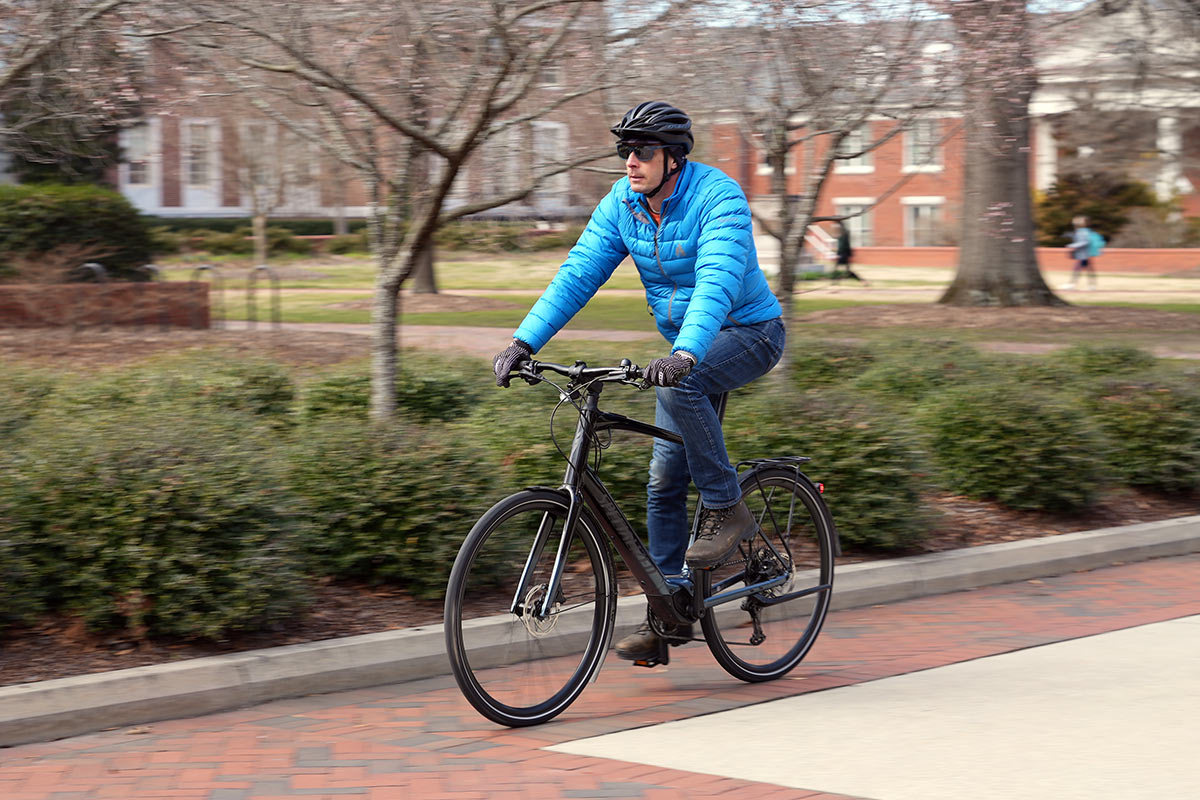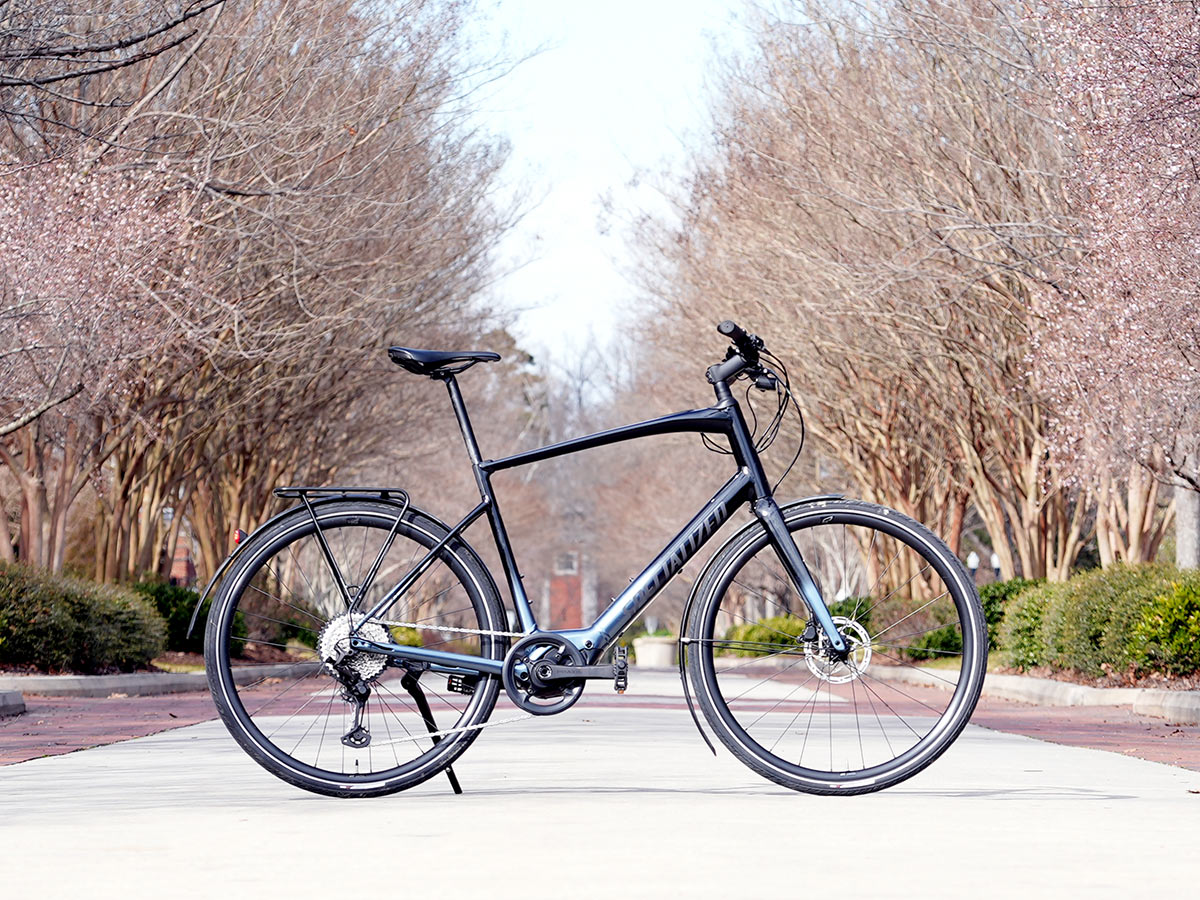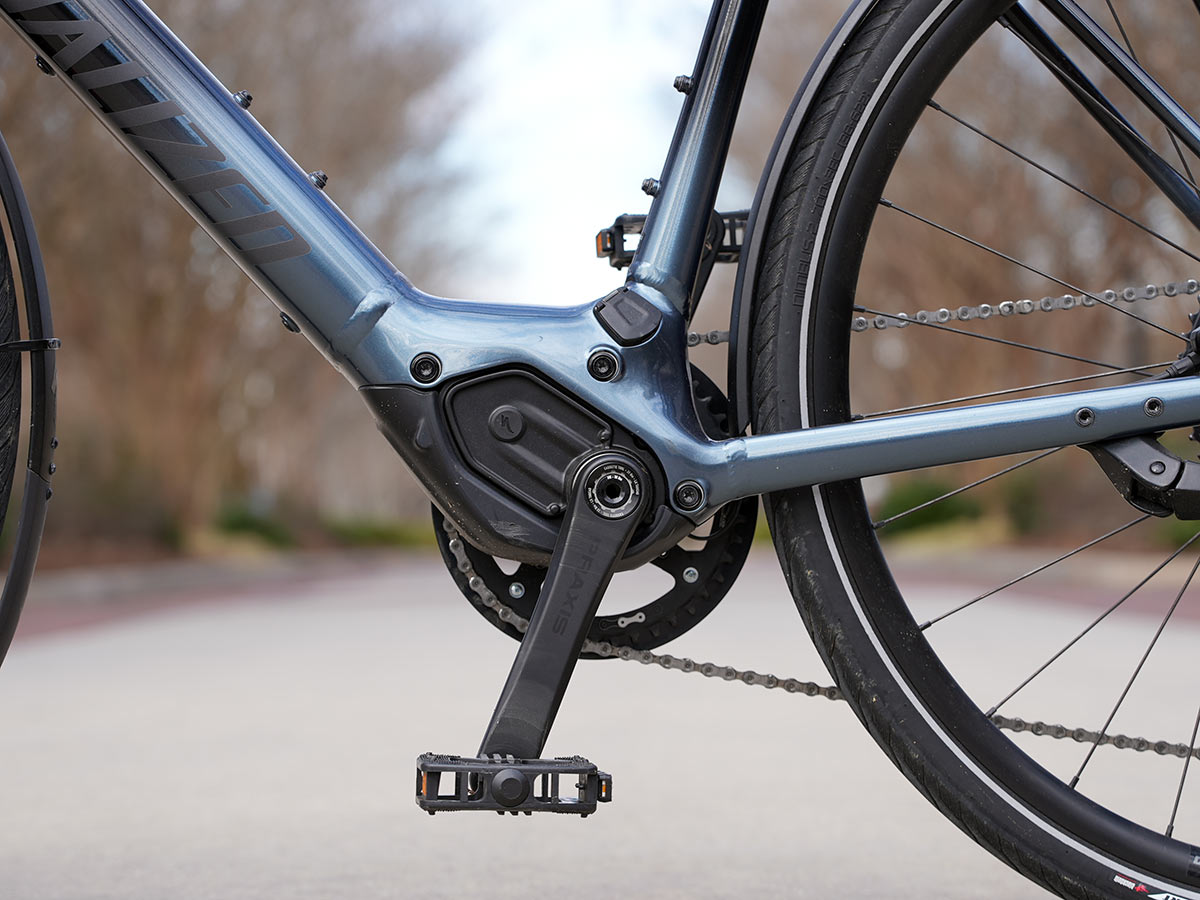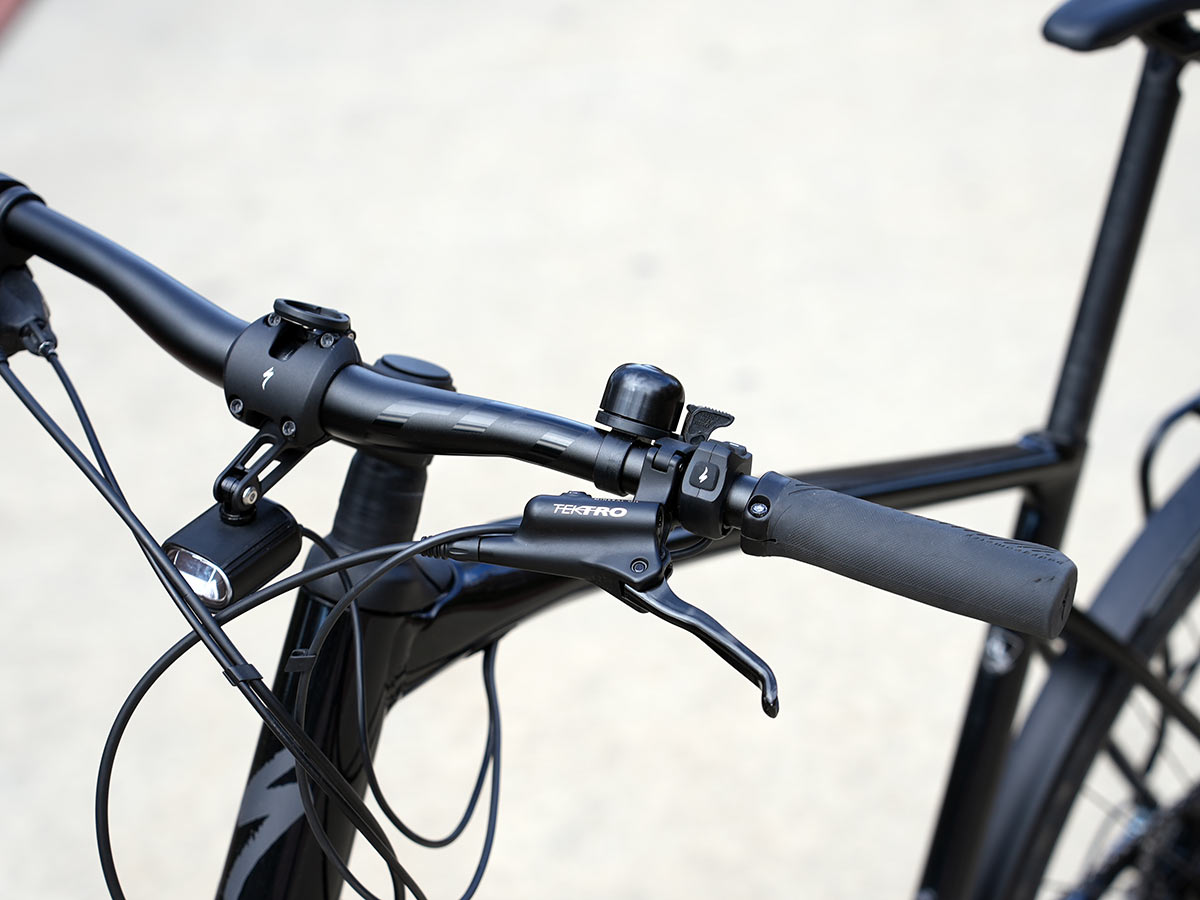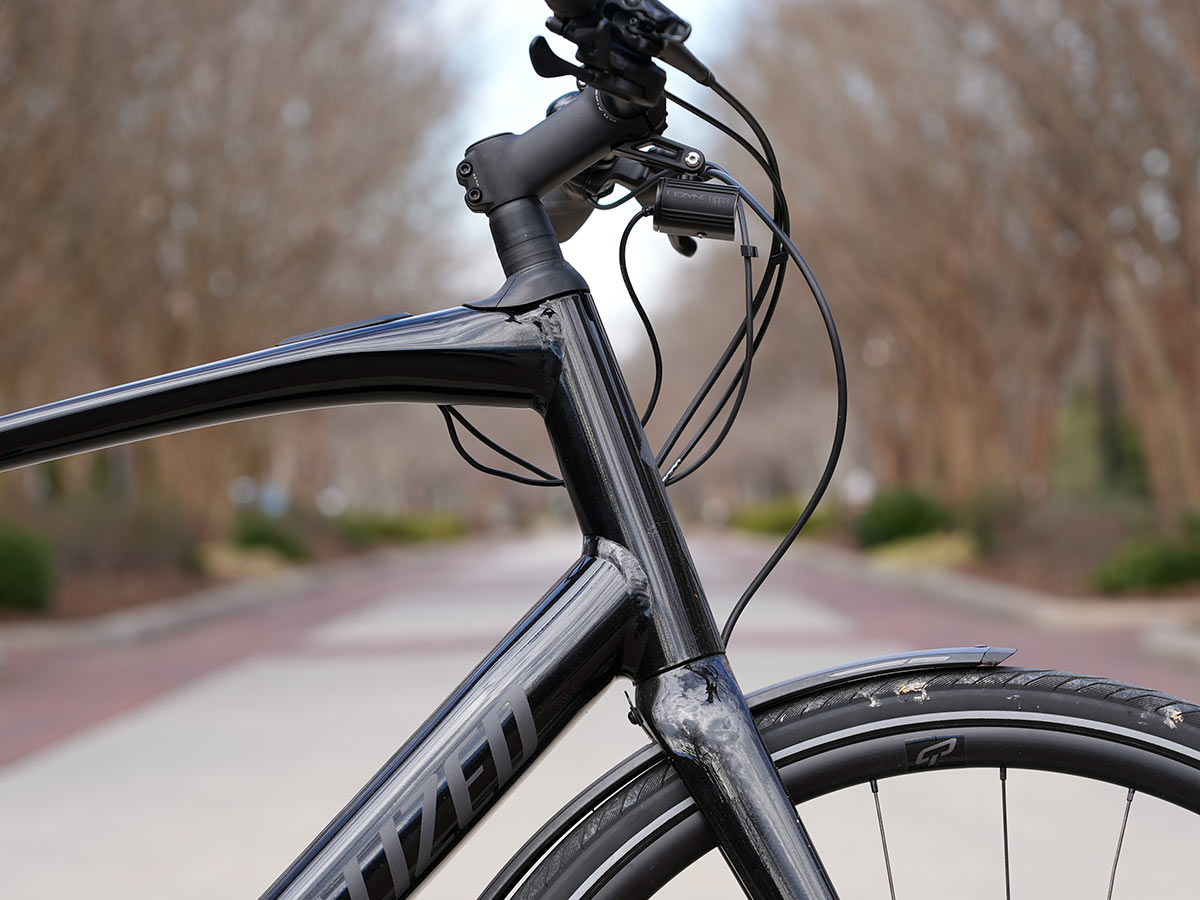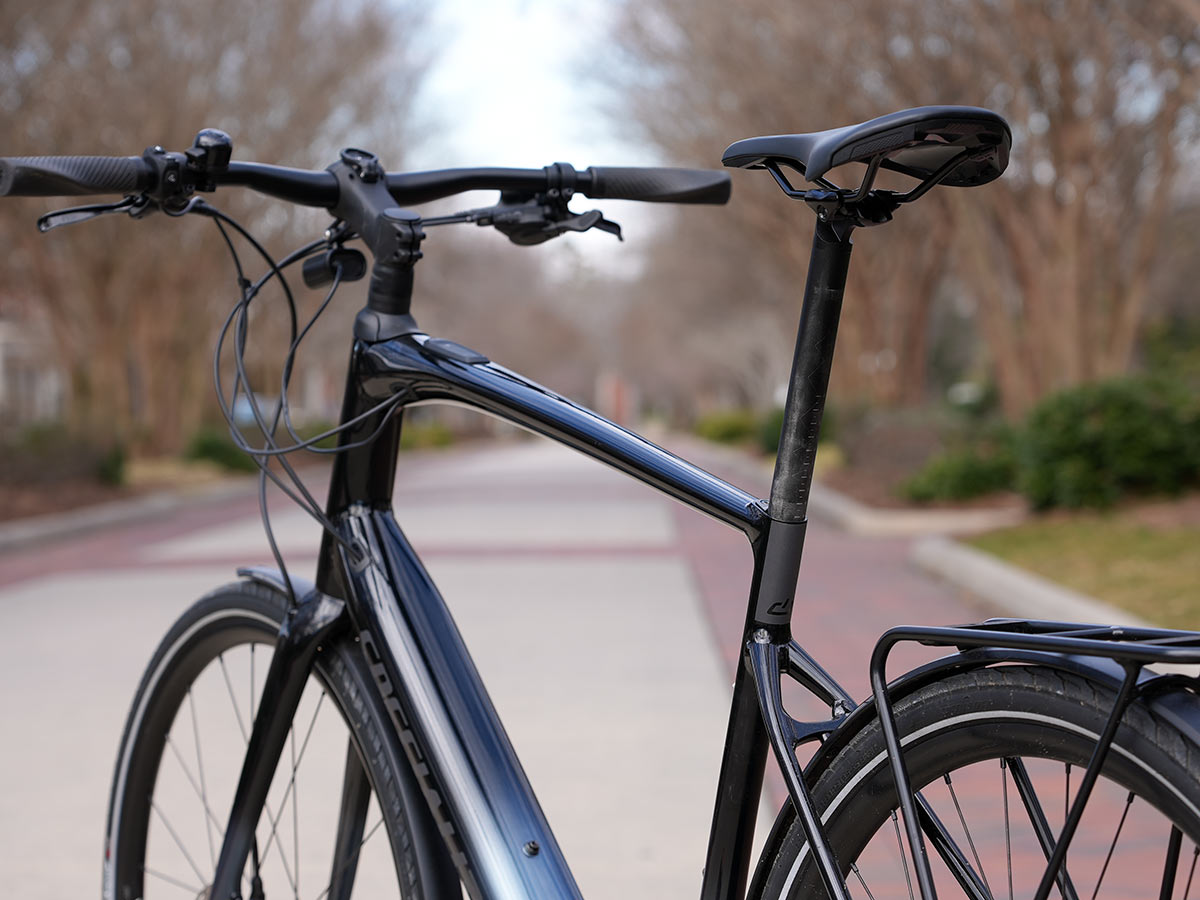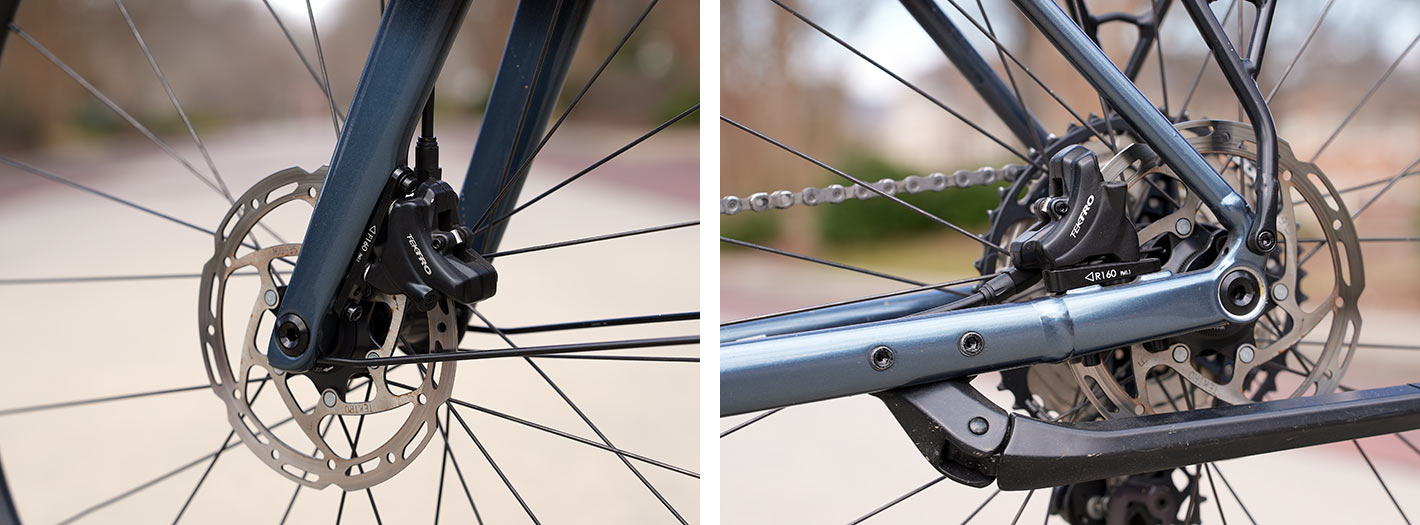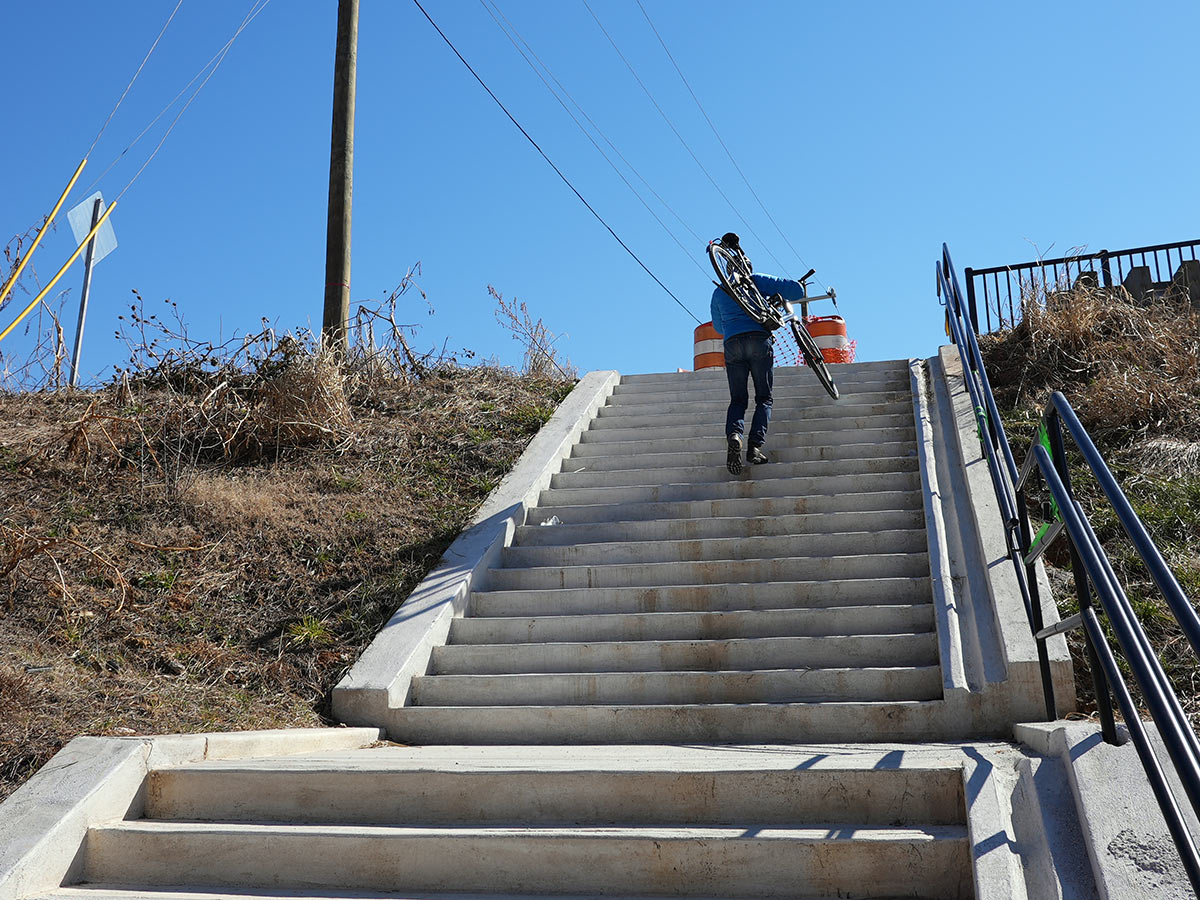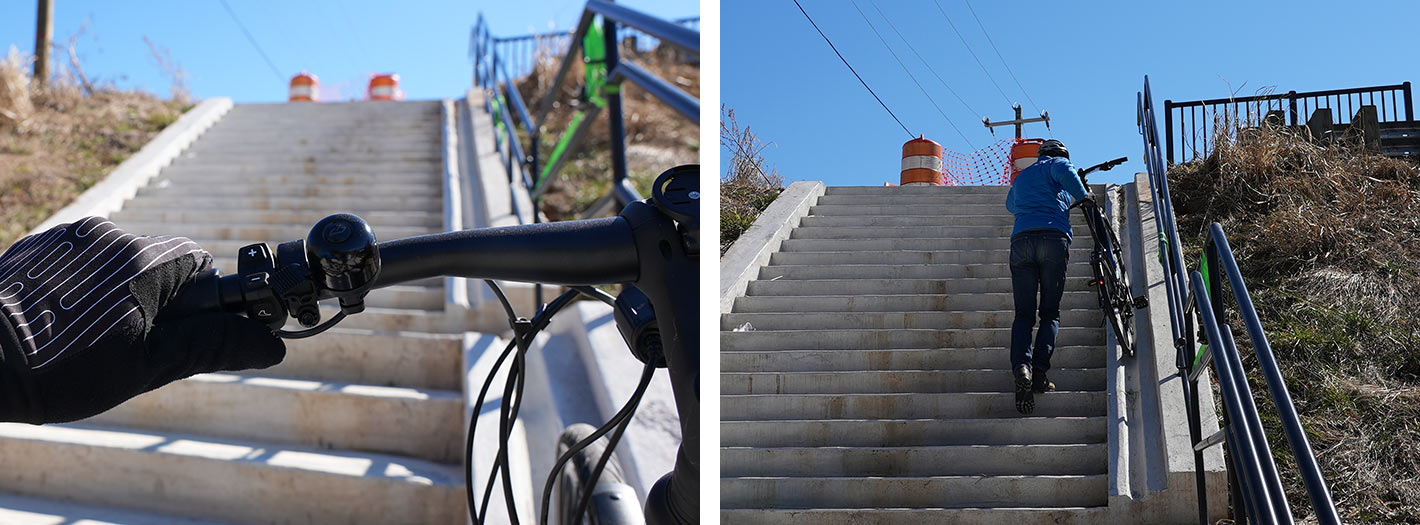The original Vado, which launched in 2017, uses a full-size (but still custom) motor with all the power you’d need for high-speed commutes. But, like all full power e-bikes, they’re heavy, and they provide a lot of assist right out of the gate.
The Specialized Vado SL takes a different approach. It uses a lower power motor, and its power comes on more slowly. This lets them use a smaller battery and motor combo, which is lighter. This gives the bike two advantages…sort of, for the right type of rider.
Which is…who, exactly? And how does it compare to the standard Vado? Let’s find out…
Vado SL tech details
The Turbo Vado SL is built around Specialized’s SL 1.1 motor, which is the lightweight version used in the Levo SL mountain bike, one of (if not) the lightest full-suspension eMTBs on the market. This is how they get away with a lithe frame that looks very much like a regular city bike, nearly as sleek as their Sirrus city bikes.
It’s a small motor, with a comparatively small battery tucked into the downtube. And there’s less “packaging” around the motor. This keeps it all quite small, but it means there’s far less sound insulation, too.
We noted the additional motor noise when we test rode the Levo SL, and that same noise is present here. Watch the video in my Levo SL review if you want to hear it. If not, suffice to say the noise is present, but soft enough to kinda be tuned out after a minute.
Also like the Levo SL (and Creo SL e-road bike), the Vado SL commuter e-bike can add 50% more range by plugging in the water bottle-shaped external battery.
The bike has three levels of assist, controlled with a thumb pad that uses a +/- pair to go up or down, plus the immediate “Turbo” button denoted with their trademark “S” logo. There’s another button on the back that I’ll get to in a sec.
Their smartphone app lets you customize the level of assist that Eco, Sport and Turbo provide, along with the percentage of effort that you’re required to do along the way. There’s also a smart mode that lets you set the distance and let the bike manage battery use and assist levels to get you there.
The on/off button is flush with the top of the top tube and also has a mode button, though it’s easier to use the handlebar-mounted remote. The top tube unit has an LED display that shows remaining battery power, with blue and green combinations to illustrate how much is left in the internal and external batteries, if you have one plugged in. It turns red when it’s almost dead.
I tested the Vado SL 4.0 Equipped. All models get front and rear taillights that automatically turn on (solid only, no blinking mode) when the bike turns on. “Equipped” models add full coverage front and rear aluminum fenders and the rear rack for only $150 more…very much worth it.
The only other option is a 5.0 model that adds their FutureShock 2.0 suspension steerer tube to take the edge off bumps, plus upgraded shifters, rear derailleur, wheels and tires. Those should save a little bit of weight, but honestly, the 4.0’s Tektro hydraulic brakes and Deore kit on this bike were perfectly fine…and this build is $1,000 less than the 5.0.
Flat mount brakes maintain the sleek look, along with integrated fender, rack and kickstand mounts. The hidden fender mounts on the bottom of the carbon fork are particularly sleek.
Main specs are:
- 240w/35Nm peak output
- 320Wh battery
- 180% max assistance
- 120 mile max range (with external battery pack)
- 28mph top speed (assisted…you can pedal it as fast as you want)
- MSRP from $3,600 to $4,750
Specialized Turbo Vado vs Vado SL

How does the Vado compare to the Vado SL? Which one’s the best commuter e-bike for you? Here’s the short of it:
If you want more power and easier speed, get the regular Vado.
If you have to carry your bike up stairs, or want more of a workout, get the Vado SL.
Both have similarly equipped trim levels at the same prices. The Vado just has a lot more power, a suspension fork, fatter tires, and it feels like it goes a lot faster even though they’re both Class III models with a 28mph top assisted speed. (Side note: Trust me, if you call yourself a “cyclist”, don’t waste time with any 20mph Class I e-bikes for a commuter or road model, you’ll only be disappointed.)
The Vado has 90Nm of power, delivering almost 3x the torque, so it’ll get you up to the max much more quickly despite being ~16lbs heavier (49lb claimed weight versus 33lb for Vado SL). It also comes in a step-thru model, the Vado SL does not.
Both versions will take you up to 80 miles per charge, but the Vado SL can use the external battery pack to increase that to 120 miles…the Vado can not.
Vado SL ride review
The Vado SL is a handsome bike. The Vado is a sporty bike. If this sounds like I’m kinda reviewing both of them, I am. We have a Vado 3.0 in our personal fleet and have been riding it for years, and it’s awesome.
The Vado SL was awesome, too, and I enjoyed the lighter weight while doing things like this:
“But, Tyler,” you say, “there’s a groove right there on the right, just wheel the bike up!”
Yep, there is, and the Vado SL has a handy Walk Assist feature for just that reason:
Just push that little button on the backside of the remote and it’ll start rolling the rear wheel forward with enough force to drive it up a ramp. As more and more cities put bike (or luggage) ramps on staircases to make our cities more bike- and pedestrian-friendly, you may find this feature quite useful.
And if your city’s behind the times, the bike is light enough to just pick up and carry.
Overall, the Specialized Vado bikes are a rock-solid choice for commuters. Whether you choose the regular or SL version depends on your needs. Personally, I’d go with the standard one because it’s just more fun and I’m parking it in my garage.
The SL requires more effort to get up to top speed, which is a great workout with the ability to still scoot up the climbs. Kinda depends on how much work you want to put into your commute. Or whether you have to heft it up stairs when you get home…I would not want to carry the regular one up a flight.
That you can get into a fully equipped, 28mph-assist e-bike with a completely integrated battery and drive system for well under $4K, from a brand with retail support to keep you rolling with updates and maintenance, is impressive. Add in great looks, and years of trouble-free use, and it’s easy to recommend Specialized Vado in either variety.
